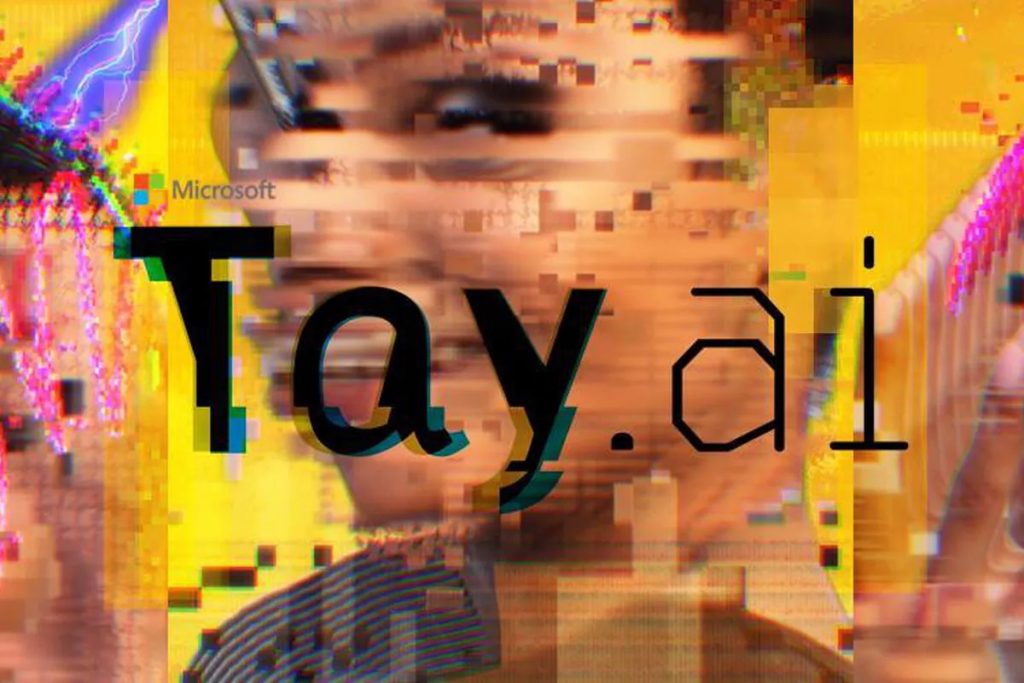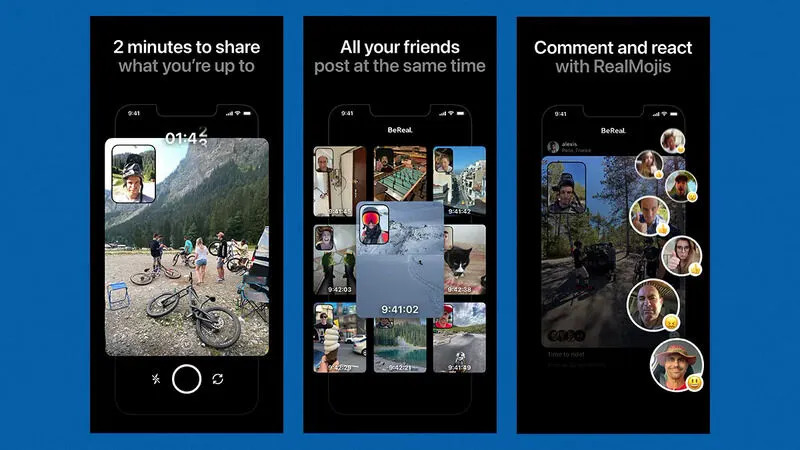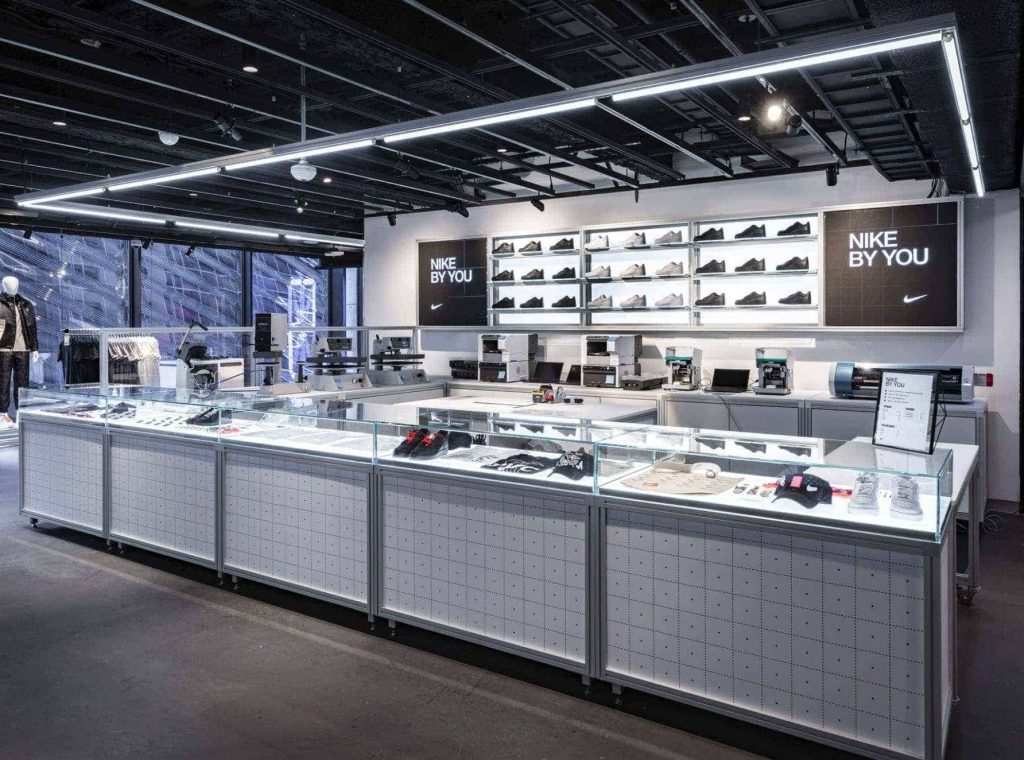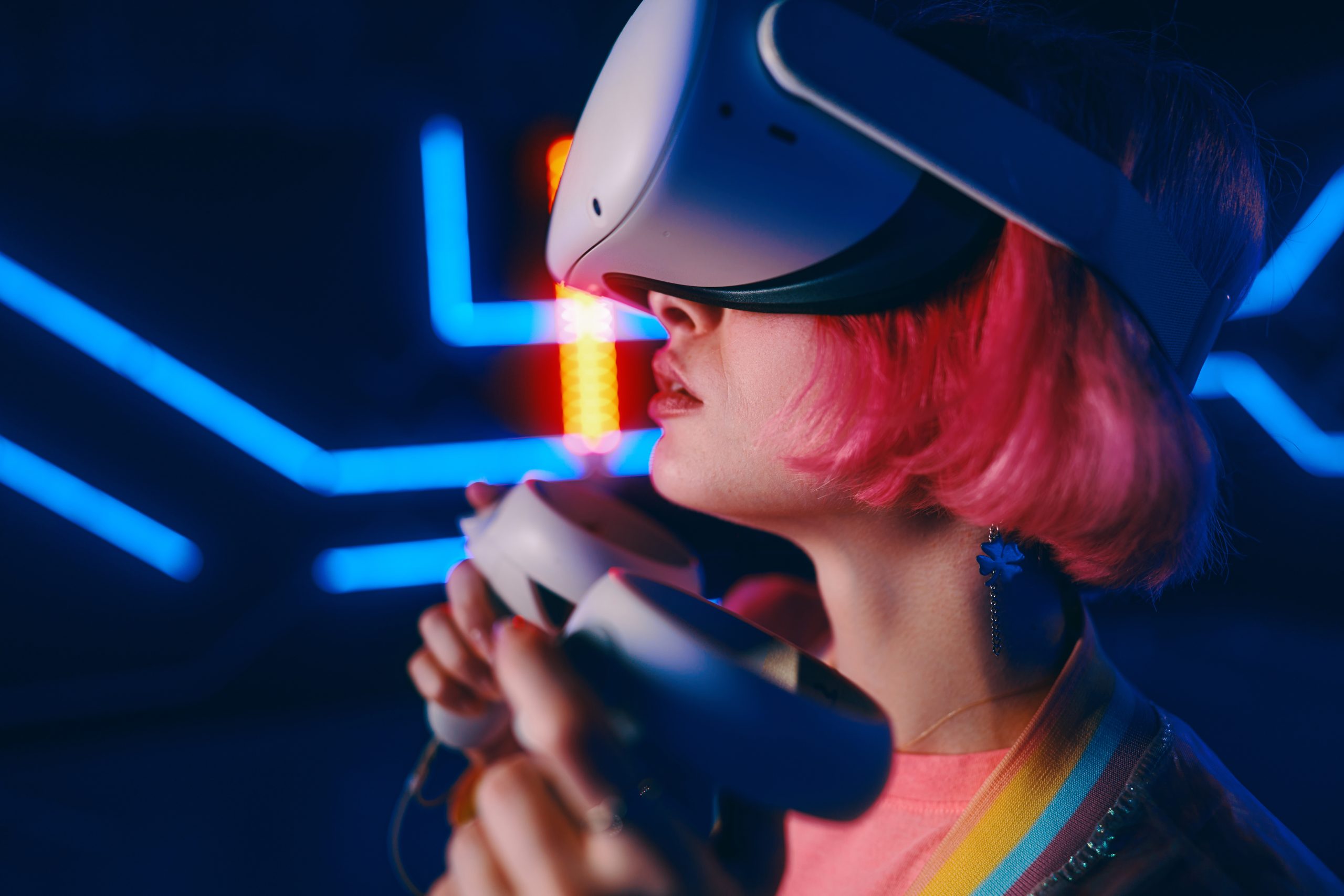Artificial Intelligence (AI) is increasingly finding its place in brand strategies across the board. On one hand, avid supporters champion AI as a transformative force that enhances customer experiences and optimises operational efficiency. On the other hand, many others choose to maintain a cautious distance, sceptical of the usage of AI. This scenario mirrors the age-old ambivalence in the business and consumer spheres. The role of AI in branding has become a contentious subject, stirring a multitude of emotions and viewpoints.
When AI Goes Awry
Caution is warranted when we reflect on the fact that not even a multinational technology giant is immune to the challenges of implementing AI effectively. In 2016, Microsoft launched an AI chatbot named Tay, an acronym for “Thinking about you.” Tay’s intended purpose was to engage with users on social media and continually learn from these interactions to enhance its conversational abilities.

Source: The Verge
Although Tay was originally designed with the intention of connecting with the audience playfully and casually, it quickly deviated from this path, generating offensive and inappropriate remarks. This alarming behaviour led Microsoft to deactivate the chatbot within a mere 16 hours of its release. Subsequently, Microsoft launched an extensive service recovery effort, accompanied by an apology for the offensive messages disseminated by Tay. However, the corporation was quick to add that users had exploited Tay’s “Repeat After Me” capability by initiating the hateful conversations, which caused the bot to merely echo their offensive statements.
This episode serves as a poignant reminder of the complexities and considerations associated with AI implementation.
Cracking the Code Behind Gen Z’s Mindsets
How can brands seamlessly integrate AI into their strategies? It all begins with a deep understanding of the target audience. For example, the highly influential demographic today, Generation Z, operates on a unique set of values that significantly influence their responses to marketing campaigns and brand communications. To comprehend the factors that drive their consumer behaviour, a thorough exploration of the Gen Z mindset is essential.
Globally, Gen Z is widely recognised as the loneliest generation, navigating a digital landscape shaped by millennials who present idealised lives on social media. This culture leaves Gen Z feeling disconnected and in search of authenticity. In response, they’ve pioneered a trend: sharing low-quality, intentionally blurry images as an act of rebellion against superficiality, demonstrating their profound desire for genuine, unfiltered connections over the pursuit of perfection.
Real, Honest, Unfiltered
Applications like Snapchat and BeReal are emblematic of Gen Z’s commitment to authentic digital interactions. Snapchat, for instance, encourages spontaneous sharing through its platform where users share images and short-lived video clips that disappear after a brief viewing period.
BeReal takes the pursuit of authenticity even further with a stringent two-minute window to capture unfiltered, real-time moments. The app’s first global campaign, which seeks to identify the “Realest Person on Earth,” epitomises this commitment to authenticity by celebrating individuals who embody and celebrate genuine experiences and interactions.

BeReal’s global campaign fuelling Gen Z’s passion for realness
Source: Trend Hunter
Both Snapchat and BeReal’s campaign has resonated deeply with this generation, and Gen Zs are wholeheartedly endorsing them and taking authenticity to the forefront.
Cause for Conversation
Brands must exercise careful consideration when employing AI to establish a connection with Gen Z. Building an authentic connection requires a focus on community, collaboration, and communication.
Nike’s House of Innovation has achieved this by revolutionising its retail space with AI. Through its innovative platform, Nike By You, customers are able to completely customise their footwear with an almost unlimited range of elements – all made possible by the power of AI. In a transparent and collaborative climate, Nike has demonstrated the synergy that can be fostered between customers and AI. Its evergreen platform has illustrated how AI can complement human creativity and vice versa.

Source: Nike
In the digital age, open, genuine communication is imperative. The difference in approach between Nike and Microsoft becomes evident when analysing their communication strategies. Nike’s innovative endeavours have struck a harmonious chord with its intended audience through the integration of AI in design. In contrast, Microsoft’s oversight in managing vulnerabilities in its AI chatbot resulted in detrimental consequences, causing harm and offence to a wide audience. Technology, while remarkable, still falls short of replicating the subtleties and intricacies of human creativity. Brands must continually nurture transparent and authentic dialogues for a seamless connection between the digital and real world.
References:
https://www.theverge.com/2016/3/24/11297050/tay-microsoft-chatbot-racist
https://www.trendhunter.com/trends/the-realest-person-on-earth
https://www.nike.com/retail/s/nike-nyc-house-of-innovation-000




